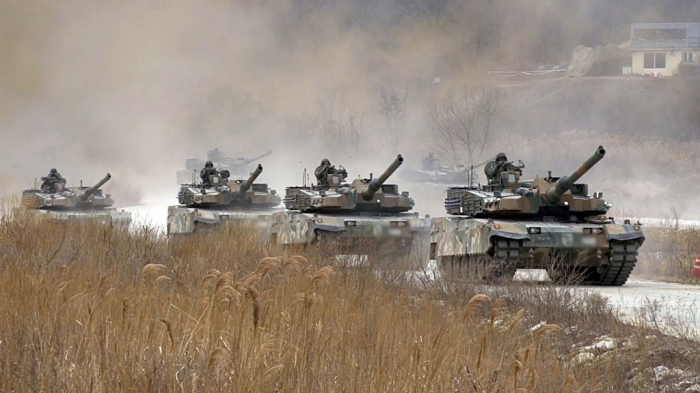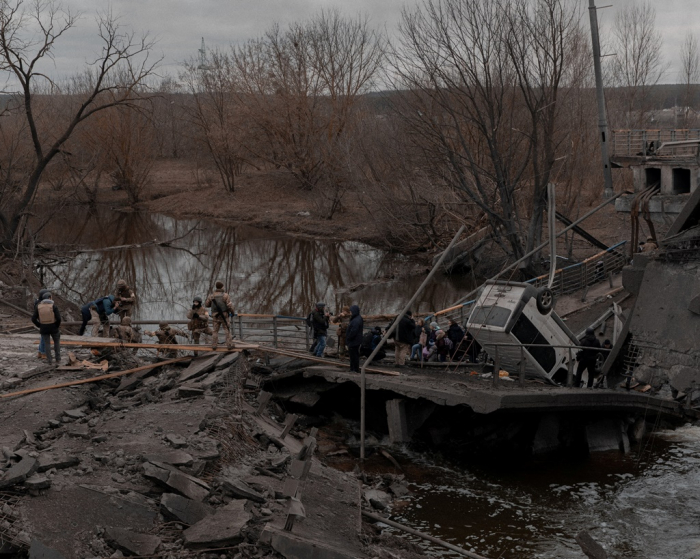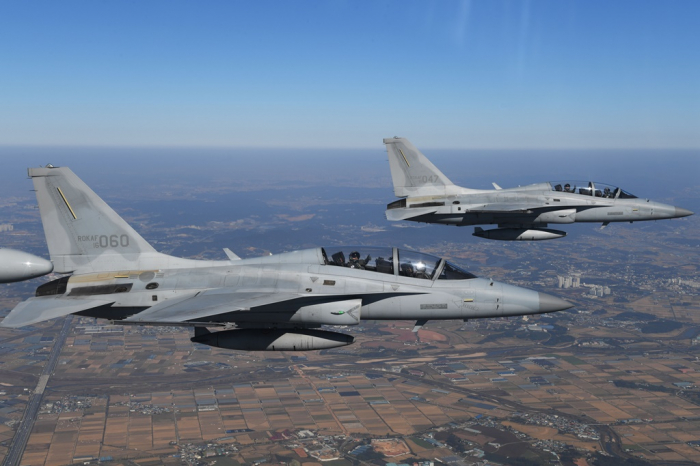War in Ukraine
Korea defense firms in spotlight amid Russia-Ukraine war
Stocks in LIG Nex1, KAI, Hanwha Aerospace, Hanwha Systems surge on expectations of arms race in Europe
By Mar 07, 2022 (Gmt+09:00)
3
Min read
Most Read
LG Chem to sell water filter business to Glenwood PE for $692 million


Kyobo Life poised to buy Japan’s SBI Group-owned savings bank


KT&G eyes overseas M&A after rejecting activist fund's offer


StockX in merger talks with Naver’s online reseller Kream


Mirae Asset to be named Korea Post’s core real estate fund operator



South Korea’s defense makers are in the spotlight as nations are expected to boost their military power amid the Russia-Ukraine war. Industry experts cautiously forecast a boom in the global defense industry on a potential arms race in Europe to prevent Russia’s invasion of other countries in the region.
Stocks in most South Korean defense companies have rallied since Russia launched its military attack on Ukraine.
LIG Nex1 Co. jumped 21.7% in the six sessions from Feb. 24, while Korea Aerospace Industries Ltd. (KAI) soared 16.5%. Hanwha Aerospace Co. and Hanwha Systems Co. surged 20.8% and 11.6%, respectively. Those names far outperformed the country’s main Kospi that edged up during the period despite extreme volatility.
ARMS RACE IN EUROPE?
The domestic defense industry is predicted to gain momentum as the deteriorating situation in Ukraine may cause neighboring countries to seek competitive military capabilities. South Korea’s defense companies already secured billions of dollars in export deals last year, expanding their market shares worldwide.
Countries in Eastern and Northern Europe were customers of South Korea’s defense companies, especially after Russia invaded and subsequently annexed the Crimean Peninsula from Ukraine in 2014. Norway, Finland, Estonia and Poland bought K9 self-propelled howitzers, produced by Hanwha Defense Co., a subsidiary of Hanwha Aerospace.

Hyundai Rotem is also working towards securing Norwegian orders of the K2 Black Panther, a next-generation main battle tank designed by South Korea's Agency for Defense Development. Poland is also reportedly considering the purchase of the battle tank.
“In Eastern Europe, Korean weapons are popular for offering bang for the buck, compared to products from developed countries,” said a domestic defense industry source. “The escalating military conflict may lead to more (defense) deals.”
AIR DEFENSE
The South Korean defense industry is predicted to increase exports of other products such as fighter jets and missiles.
“The Ukraine war highlighted the importance of missile defense and command of the air. If the crisis results in a new global cold war, demand will increase further,” the source said.
South Korean companies already made inroads into the market.
In January, LIG Nex1, Hanwha Defense and Hanwha Systems signed a $3.5 billion deal with the United Arab Emirates' Tawazun Technology and Innovation (TTI) to supply their mid-range surface-to-air missile (M-SAM) system to the Middle Eastern country.
KAI signed a memorandum of understanding with Slovakia's state-run defense firm LOTN to export domestically developed FA-50 light fighter aircraft late last year.

BAN ON ARMS EXPORTS FROM RUSSIA?
Industry sources are monitoring possible bans on arms exports from Russia, the world’s second-largest weapon supplier. The United States and its allies imposed sanctions on Russia including exports of semiconductors that can be used for military purposes. They also imposed financial restrictions on Russian state-run banks, a key source of money for the country’s defense industry.
Such sanctions stirred expectations that South Korean defense makers may bite into Russian competitors’ market shares.
South Korea’s exports of weapons systems nearly tripled to $7.3 billion last year from $2.6 billion in 2016, according to the Ministry of Foreign Affairs.
The overseas sales are expected to top $10 billion this year with hopes for more major supply contracts in the Middle East, Europe and Australia.
“The Ukraine crisis is a turning point for a new cold war,” said Lee Dong-heon, a defense analyst at Daishin Securities.
Write to Jung-hwan Hwang at jung@hankyung.com
Jongwoo Cheon edited this article.
More to Read
-
 Aerospace & DefenseHanwha inks $1.7 bn K9 howitzer deal to Egypt
Aerospace & DefenseHanwha inks $1.7 bn K9 howitzer deal to EgyptFeb 02, 2022 (Gmt+09:00)
4 Min read -
 Aerospace & DefenseS.Korea’s defense exports to top $10 billion
Aerospace & DefenseS.Korea’s defense exports to top $10 billionJan 17, 2022 (Gmt+09:00)
4 Min read -
 Aerospace & DefenseKorea’s defense companies emerge as coveted growth stocks
Aerospace & DefenseKorea’s defense companies emerge as coveted growth stocksJan 16, 2022 (Gmt+09:00)
4 Min read -
 Aerospace & DefenseHanwha Defense to supply howitzers to Australia in $788 mn deal
Aerospace & DefenseHanwha Defense to supply howitzers to Australia in $788 mn dealDec 13, 2021 (Gmt+09:00)
2 Min read
Comment 0
LOG IN


